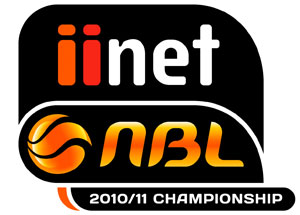Table of Contents
- Fury vs Usyk 2 – The Ultimate Heavyweight Showdown
- Psychological Warfare Tactics
- Technical Mastery in the Ring
- Precision Footwork
- Defensive Wizardry
- The Impact of Previous Encounters on This Bout
Fury vs Usyk 2 – The Ultimate Heavyweight Showdown
In the world of professional boxing, few events capture the imagination quite like a highly anticipated rematch between two of the sport’s most formidable figures. This usyk vs fury 2 upcoming encounter promises to be a riveting spectacle, pitting two warriors against each other in a contest that has been the subject of intense speculation and analysis.
As fans and experts alike eagerly await the rescheduled bout, the narrative surrounding these combatants has only grown richer. Both athletes have demonstrated unparalleled skill, resilience, and strategic acumen in their respective careers. Their first meeting was a masterclass in tactical boxing, leaving fans clamoring for a sequel that could potentially redefine the landscape of the division.
In this article, we will dissect the key factors that could influence the outcome of this monumental clash. From the psychological edge to the physical attributes, every aspect of these fighters’ preparations will be scrutinized. Whether you’re a die-hard fan or a casual observer, this analysis will provide you with a comprehensive understanding of what to look for when these titans step into the ring once more.
So, buckle up and prepare for a deep dive into the intricacies of this much-awaited rematch. The stage is set, the fighters are ready, and the world is watching. Let the battle commence.
Psychological Warfare Tactics
In the realm of high-stakes combat, the mind game can be as crucial as physical prowess. This bout is no exception, with one contender known for his strategic use of psychological tactics to unsettle his opponents. By employing a blend of verbal jabs, calculated gestures, and a relentless confidence, this fighter aims to dismantle his rival’s mental fortitude long before they step into the ring.
The pre-fight banter is a carefully orchestrated dance, designed to create doubt and erode the challenger’s self-belief. Through media appearances and social platforms, the seasoned pugilist delivers a steady stream of taunts and boasts, each word meticulously chosen to provoke a reaction. This approach not only serves to boost his own morale but also to cast a shadow of uncertainty over his opponent’s preparations.
Beyond the verbal sparring, subtle actions play a significant role. Public displays of dominance, such as mock training sessions or exaggerated celebrations, are used to assert control and project an aura of invincibility. These gestures, though seemingly minor, are part of a broader strategy to undermine the challenger’s confidence and highlight any perceived weaknesses.
Ultimately, the goal is to create an environment where the challenger feels pressured to perform beyond their limits, potentially leading to mistakes. By mastering the art of psychological warfare, this fighter seeks to gain an edge that could prove decisive in the heat of battle.
Technical Mastery in the Ring
In the realm of professional boxing, few possess the ability to dominate through sheer technical prowess. This section delves into the intricate skills that set one fighter apart, showcasing a blend of precision, strategy, and adaptability that few can match. From footwork to defensive maneuvers, each element contributes to a comprehensive and formidable style.
Precision Footwork
One of the hallmarks of this fighter’s approach is their impeccable footwork. They navigate the ring with a grace and precision that allows them to control the distance and angles of engagement. This agility not only helps in evading incoming punches but also creates opportunities for counterattacks. The ability to shift positions fluidly and unpredictably keeps opponents constantly guessing and off-balance.
- Distance Management: Mastery in maintaining optimal range, whether to land precise jabs or avoid heavy blows.
- Angle Variation: Continuous change of angles to disrupt the opponent’s rhythm and defense.
Defensive Wizardry
Defense is another cornerstone of this fighter’s strategy. Their defensive techniques are a blend of classic and innovative methods, making them a difficult target to hit. The combination of head movement, shoulder rolls, and parries creates a nearly impenetrable shield, frustrating even the most aggressive challengers.
- Head Movement: Swift and unpredictable shifts that evade direct hits.
- Shoulder Rolls: Utilizing the shoulders to absorb and deflect punches.
- Parries: Quick, precise hand movements to block and redirect incoming strikes.
In summary, the technical expertise displayed by this fighter is a testament to their dedication and skill. Their ability to blend precision footwork with defensive wizardry creates a dynamic and challenging opponent, making them a formidable presence in any bout.
The Impact of Previous Encounters on This Bout
The history of past meetings between combatants often serves as a crucial indicator of what lies ahead. Each clash, whether in the ring or on the canvas, leaves an indelible mark on the psyche and strategy of the participants. These encounters are not merely footnotes in a storied career; they are the building blocks of future performances, shaping the very essence of the upcoming battle.
Previous bouts provide a roadmap for both the tacticians and the fighters themselves. They reveal patterns, expose vulnerabilities, and highlight strengths that may have been overlooked in the heat of the moment. For the strategists, these historical data points are invaluable, allowing them to fine-tune game plans and anticipate potential shifts in momentum. The fighters, on the other hand, draw from these experiences to refine their approach, whether it be in terms of endurance, technique, or mental fortitude.
Moreover, the psychological impact of past encounters cannot be underestimated. The memory of a previous victory can instill confidence, while a loss may serve as a powerful motivator for redemption. These psychological factors play a significant role in the ring, influencing decision-making and resilience under pressure. As the fighters step into the arena, they carry with them not just their physical prowess, but also the collective weight of their past battles.
In essence, the history of previous clashes is a tapestry woven with threads of strategy, psychology, and experience. It is this intricate tapestry that will be unraveled and examined as the fighters prepare for their next monumental encounter, each hoping to use the lessons of the past to secure a future victory.





































